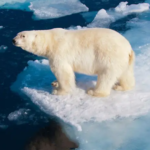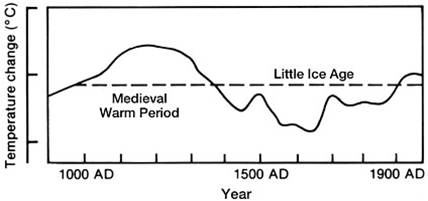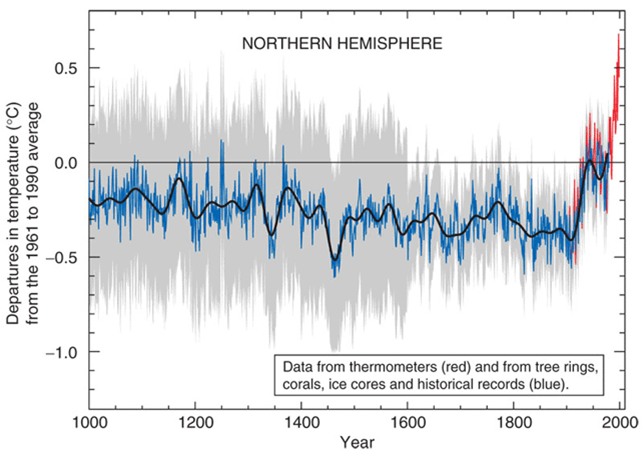
In Blog 1 in this series I described how science as the expression of reason was developed in the enlightenment and how it is coming under pressure today. In this Blog 2 I discuss climate change from that perspective.
The following assumption is the basis for the evaluation:
The consequences of the political decisions in the context of climate change are potentially of extremely high costs for the society. Therefore the facts and arguments used as the basis for such decisions need to meet very high criteria to make them fit for the purpose.
Climate science is used as the source of arguments to support political decisions to influence the climate of the future. Fortunately there is a way to make sure that such arguments delivered by climate science are sound and not irrational: the scientific method as defined by K. Popper.
His major approach to make a theory proof against irrationality is falsification. It must be falsifiable but not be falsified.
There are several important aspects of this methodological approach. A major one is that a theory can never empirically be proven correct. Whatever we collect as supporting data for a theory will not exclude that among the data we do not have are those which disprove or falsify the theory.
This is the reason why Popper focuses on falsification. If the scientist looks for falsification he will easier be able to identify critical flaws in his theory. A scientist focused on verification, on the other hand, is in danger to pile up useless supporting data but not to find those which make the theory invalid.
A major weakness of scientists looking for verification is usually the confirmation bias. It is one of the most delusive attitudes in science. Under its influence the scientist will find the most improbable argument which supports his theory and will overlook and discard everything which questions it.
Discussion of climate science from the perspective of Poppers definition of science
1. Politics in the drives seat
The IPCC (Intergovernmental Panel on Climate Change) is the driver behind the 30 years story of global warming and climate change. Created in 1988 by the World Meteorological Organization (WMO) and the United Nations Environment Programme (UNEP) it is reporting to the UN.
According to the relevant UN documents and the principles governing its work it was created to look into “human induced climate change”, its danger and to propose ways to mitigate it.
2. The consequences
This narrow focus had serious consequences. From 1988 onward billions of government money would flow into research of human induced climate change (assumed but not understood) and almost nothing into the research of natural fluctuations of the climate (normal over millennia but not understood either). Therefore from day one the null hypothesis of natural causes of climate change had a difficult time in the science community versus the much more lucrative hypothesis of the humans as the driver. Exactly as Eisenhower predicted politics decided about the direction of the research it was funding.
What followed
- Only if the human influence on the climate could be shown to be threatening would the money continue to flow.
- Scientists had therefore every incentive to demonstrate an overwhelming human contribution to climate change and that said climate change be dangerous enough to justify spending billions on research and to mitigate/prevent it.
- While the confirmation bias is a general human weakness in the context of science the political direction attached to the funding increased the temptation a thousand fold.
3. A few examples (from hundreds)
As a consequence there is a never ending list of examples how the climate science goes out of its way to prove that humans are threatening the future of the biosphere through the emission of CO2. Not surprisingly, it culminates regularly in efforts to suppress or discard data which contradict the foregone conclusion.
I will showcase just a few rather bold attempts from the long list:
- The University of East Anglia Climate Research Unit is a leading institution in climate science. 2009 a hacker published hundreds of e-mails written by their scientists. They show a depressing attitude to hide, suppress and denigrate data which do not support their preferred theory of climate change. It clearly goes far beyond a simple confirmation bias and demonstrates a state of mind in the climate science community which is unscientific at best and corrupted by the government funds at worst.
- For decades there was an agreement that there were warm periods in the past with temperatures close to or even above what we measure today. Numerous archaeological findings supported this theory. (Higher treeline in the Alps, Wine grown in England and Scotland etc). The IPCC in 1990 published a graph representing these findings:

However since a warmer Middle Age did not support the claims of a human induced catastrophic global warming, climate science needed “to abolish the medieval warm period” (e-mail Dr. Jonathan Overpeck to Dr. David Deming, 1995). And abolish it they did. In 2001 Prof. Mann, one of the main figures in climate change science published the famous hockey stick graph:

Now climate science was able to “prove” that the modern warming was unprecedented and much more money was needed to further investigate the threat and the potential actions against it. Of course the scientific merit of the data and the statistical methods used in this graph were soon questioned. However the authors of the graph prevented a careful evaluation by hiding important statistical data.
- The temperature records over the last couple of hundred years are imperfect due to incomplete coverage, measurement errors, changes in the environment of the measuring station etc. Therefore they are being reviewed and adjusted constantly. The surprising fact is, that the adjustments have mostly been going into one direction: They increase the warming trend in the measurements. This very much looks like manual data manipulation is used to support the “correct” theory of the catastrophic climate change.
- The basis for the model calculations of future global temperatures over the last 30 years were the emission scenarios (“Representative Concentration Pathways” (RCPs)). For almost all model calculations predicting doom the scientists used the Worst Case Scenario RCP 8.5 and called it “business as usual”. This despite the fact that it contains assumptions about the future that represent clear breaks in actual trends and are highly improbable. As one example it assumes, without any explanation, a sudden break in the decade long improvement of the energy needed to generate a USD of economic output (below). The advantage: by using this scenario climate science could make much more threatening predictions of the future temperature development.

- The social costs of climate change are the basis for the economic justification of the immense investments needed to fight it. It is interesting to observe that in the calculations of these costs the benefits of a higher CO2 level and a higher temperature are either fully neglected or the lowest assumptions are taken into account. For example you find a lot of info about lives lost due to higher temperatures but hardly anything about prevented deaths due to cold temperatures. It is obvious that the future must look bleak for the studies to continue.
- In their AR3 assessment report the IPCC admits: “In climate research and modeling, we should recognize that we are dealing with a coupled non-linear chaotic system, and therefore that the long term prediction of future climate states is not possible.” The way around it chosen by climate science is to take averages of model outputs assuming that there are no systematic errors influencing the results. This is a rather reckless assumption knowing that after 30 years and billions spent on research the scientists have not been able to improve their results in terms of warming per doubling of CO2.
- A major challenge for the climate science are the predictions which can be empirically tested. And there are many. What happens if the predictions are not coming true? Mostly NOTHING! One of the best examples is the prediction of an increase in extreme weather event. The analysis of the hurricane activity and the related comments by climate science experts reveal the old confirmation bias. Data which support their theory are extensively published while those which go in the other direction are either neglected or minimized and their authors are attacked. The most recent example demonstrating this bias is a publication about the influence of the sun on the climate. From two potential explanations equally supported by facts one is suppressed and the one confirming the preferred theory is published as the only valid one.
4. The conclusions
Climate science is obviously driven by the billions it receives if (and only if) it shows that human activities have a major negative influence on the climate.
The scientists therefore try everything to prove that the emission of CO2 represents a serious threat. Confirmation bias runs rampant. Attempts to question or falsify the theory are often suppressed, ridiculed and even silenced.
It is obvious that climate science does not classify as a rigorously scientific undertaking as defined by K. Popper. This makes it open for irrational content. We cannot trust it to deliver an objective picture of the climate reality. It is definitely dangerous to be used as a basis for making wide reaching political decisions. It is simply not fit for purpose as applied by the governments and politicians in their evaluation of the dangers of global warming.
